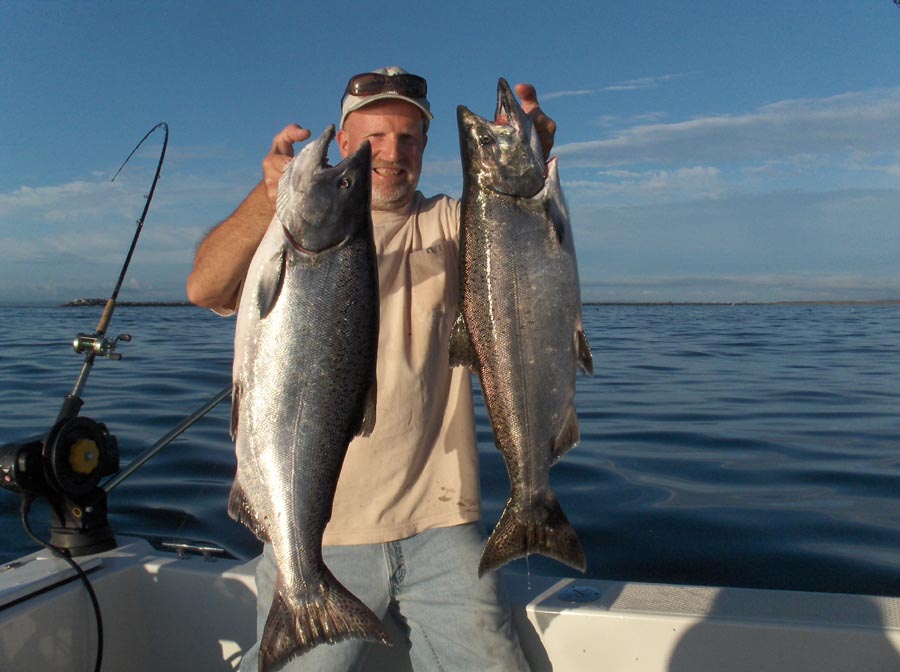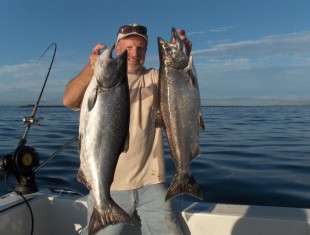
Like many life forms that most people know little about, the Pacific Lamprey gets very little press. Modern humans find them kind of disgusting.
These 12 to 30-inch long slimy eel looking creatures with a large round blood sucking apparatus and a bunch of teeth aren’t the most appealing looking things on the planet, and in the not too distant future they could become endangered or extinct.
Here in the Pacific Northwest during the last 150 years we have been very industrious, which is necessary for our life style but tough on the native creatures that have survived here for millions of years.
The Pacific Lamprey really hasn’t changed in the last 360 million years and they somehow survived the last two major extinction events. A little over 200 million years ago massive volcanic activity poisoned the air and oceans causing 90 percent of life on earth to perish.
Then an asteroid hit in the Gulf of Mexico 60 -some million years ago wiping out the dinosaurs along with many other plants and animals. It’s almost hard to believe we could be so good at exterminating life forms in such a short period of time.
Only 175 years ago there were millions of Pacific Lamprey spawning in rivers from California, up the coast to Alaska, across to Russia and Northern Japan. The major spawning rivers on the west coast were the Fraser, Columbia, Klamath, Trinity, Eel, Sacramento and San Joaquin Rivers. There were also lots of them in the Chehalis River, and there are still some there.
Lampreys belong to a primitive group of eel-like fishes that have no true fins, scales, jaws or bones. Like some other ancient fish, they have cartilage instead if bones similar to sharks and rays. And like salmon they are anadromous, meaning they are born in fresh water streams and rivers and then migrate to salt water and eventually return to their river of origin to spawn.
During their one to three years in the ocean they are always looking for their next host to lock on to and suck out some nutrients. They tap into salmon, various flatfish, rockfish, Pollock and others. But they are also food for larger fish and marine mammals.
Pacific Lamprey has been caught in commercial fishing nets down to 2600 feet deep and over 60 miles out in the ocean.
After feeding in the ocean for up to 42 months, they migrate back to their river during late winter and spring. They will never feed again and usually won’t spawn until the next year, just living on their fat reserves.
The lampreys aren’t powerful swimmers against the river current and will use their sucker like mouth to attach to a rock and rest. Pacific Lampreys like to spawn in nice clean gravel, just like salmon do. Both male and female build a nest with their tails and lay eggs and deposit sperm similar to salmon.
A large female can lay up to 80,000 tiny eggs. Within a month after spawning the lampreys die of old age and become food for other creatures. They also decompose, adding marine nutrients to the ecosystem.
At a water temperature of 60 degrees, the eggs will hatch in 20 days.
The young are called ammocoetes and will drift downstream until they reach suitable habitat of slow current and a muddy bottom that they can burrow into and eat diatoms and algae, feeding kind of like a worm for the next three to seven years.
During this time, they are a major food source of baby Coho salmon and many other hungry creatures. After that they start evolving and eventually will look like a small adult lamprey of about four inches long and start heading downstream for the ocean to continue their amazing life cycle.
During their years feeding in the mud, they cannot survive our man-made chemicals and pollution. They never had to deal with all that nasty stuff we let drain into the rivers, so they sometimes die way before their time.
High late summer water temperature of over 75 degrees will also wipe them out. Dams, even with salmon ladders, make it almost impossible for lampreys to reach ancient spawning grounds. And to make matters worse in the last hundred years non-native fish like bass, sunfish, walleye, striped bass, catfish and others have been feeding on baby lampreys.
With so many things working against our Pacific Lampreys their population has decreased by at least 80 percent in many areas. They were once an important food source for Native Americans, and they still harvest some on the Columbia River. But they really don’t have any economic value in the Pacific Northwest, so the money to help save them is out of the question.
The world is changing and if creatures can’t adapt to our life style they may eventually go extinct.

